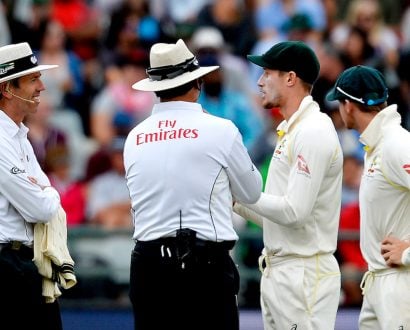What leaders can learn from the Australian Cricket ball-tampering saga

In March 2018, the Australian men’s cricket team was touring South Africa for a test series. During the third match Cameron Bancroft, a relatively new member to the Australian team, was caught on camera appearing to rub the cricket ball with a small object he had pulled out of his pocket.
When Bancroft realised he had been seen he hid the object down the front of his trousers. This action was also caught on camera and broadcast on live television.
From that point on, the responses of the key people involved were inconsistent.
The umpires on the ground were alerted by the third umpire and approached Bancroft. They asked to see what was in his pocket to which he responded by showing them the cloth he used to clean his sunglasses. He did not present the foreign object he had just placed down the front of his trousers.
During the press conference at the end of the day’s play, Bancroft was accompanied by Australia’s captain, Steve Smith. Both players acknowledged they had attempted to alter the condition of the ball and advised that the object was nothing more than adhesive tape that dirt had stuck to.
Smith admitted he knew about the plan, which was hatched during the lunch break by the ‘leadership group’. But he refused to name who was involved in the group. The media immediately questioned if he should stand down as captain. While Smith admitted it was a mistake, he had no plans to stand down. He failed to grasp the seriousness of what had taken place on the cricket field or the growing resentment among the cricketing community.
Perhaps someone should have provided the players with the Forbes article, ‘The 13 Golden Rules of PR Crisis Management’, published in 2017. The number one rule is to take responsibility. The second rule is to be proactive, transparent and accountable. Smith and Bancroft failed to follow both these rules. However, their mistakes provide valuable lessons for anyone in leadership.
While the initial response of the Australian captain lacked any form of leadership or understanding of the seriousness of what was unfolding, the response from Cricket Australia’s CEO, James Sutherland, was proactive, transparent and accountable.
Sutherland’s first email to the Australian cricket community started with, "We are sorry". He then continued to outline what actions would take place and promised to report back in 24 hours. The next day, Sutherland sent another email to Australian cricket fans, once more apologising and also announcing that both Smith and David Warner (the vice-captain, who was the other member of the leadership group involved in the plot) had agreed to stand down from their leadership roles for the remainder of the match.
After the match, Cricket Australia launched its own investigation and Sutherland immediately flew to South Africa to join the investigation. It was only during this investigation, that Bancroft admitted he had in fact used sandpaper, and not sticky tape, to alter the condition of the ball.
The final findings resulted in a 12-month suspension for Smith and Warner and a nine-month suspension for Bancroft, from all forms of domestic and international cricket.
On returning home to Australia, all three players held emotional press conferences, breaking down and apologising unreservedly for their actions. Some would argue far too late.
As leaders, we will be judged on our decisions and actions, especially in a time of crisis. What this case shows us is that people will respond better when we quickly admit mistakes and take full responsibility and accountability. This is further enhanced if followed by proactive and transparent communications.